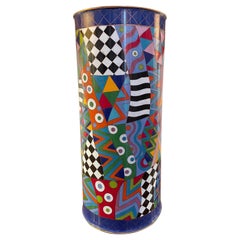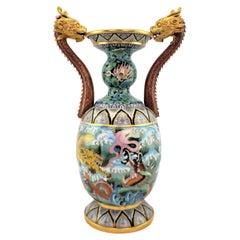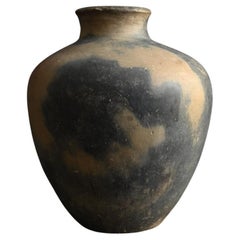Missoni Home Decorative Objects
Missoni Home is an offshoot of the celebrated Italian fashion label Missoni. The company's home collection was introduced in the early 1980s.
In 1953, Ottavio “Tai” Missoni (1921–2013) and Rosita Missoni (b. 1931) opened a small knitwear shop in Gallarate, Italy, paving the way for what would become an iconic style of colorful chevron knit.
Missoni began with a tracksuit, which featured zippers down the legs because, as Rosita recalls it, “Tai was too lazy to take off his shoes when putting them on.” The couple’s fashion really took off, though, once they discovered the Raschel knitting machine on a trip to a shawl factory. The machine enabled the Missonis to knit multiple colors in a zigzag pattern, a motif that would go on to become synonymous with the Missoni brand across everything from its alluring vintage day dresses and sweaters to its purses, seating and rugs.
Missoni held its first fashion show in Florence in 1967 and caused a bit of a sensation when the models’ Lurex dresses proved translucent under the lights at the Pitti Palace. Scandal aside, the show went down in history as a hit, and the Missonis soon made their debut in the United States with the help of legendary fashion editor Diana Vreeland, who gave the variegated Missoni stripe the Vogue seal of approval, saying, “Who says a rainbow has seven colors? It has many shades.” (It was also Vreeland who reportedly introduced the Missonis to Neiman Marcus president Stanley Marcus, effectively shepherding the brand to the American market.)
Missoni’s many-shaded rainbow would soon become an emblem of the 1970s fashion scene, earning the brand a permanent place in the fashion canon. In 1973, the New York Times proclaimed: “Missoni’s weaved garments have ended up universal materialistic trifles, as Vuitton sacks and Gucci shoes.” By then, Ottavio had been creating tapestries, and some of his knitted fabrics were shown in an exhibition at Galleria Il Naviglio in Venice in 1975.
The brand branched into the home market in 1983, with Rosita overseeing this new venture, Missoni Home, which included furniture, textiles and accessories.
For its popular seating and other furniture, Missoni's partners have included Paolo Stella, Piero Lissoni, Kartell and Roche Bobois. One of the latter's best-selling furniture designs has been the modular Mah Jong sofa, designed by Hans Hopfer in 1971, and editions upholstered with Missoni fabric are dazzling in any interior.
Daughter Angela succeeded her mother at the helm of the brand, where she still serves as president and creative director today; her brother Luca is CEO, while her daughter Margherita is creative director of offshoot M Missoni.
Find Missoni Home furniture on 1stDibs.
1990s Italian Modern Missoni Home Decorative Objects
Metal
Late 20th Century Chinese Chinese Export Missoni Home Decorative Objects
Brass
18th Century Japanese Edo Antique Missoni Home Decorative Objects
Pottery
Early 1900s American Art Nouveau Antique Missoni Home Decorative Objects
Art Glass
1920s French Art Deco Vintage Missoni Home Decorative Objects
Art Glass
16th Century Japanese Other Antique Missoni Home Decorative Objects
Pottery
21st Century and Contemporary Italian Modern Missoni Home Decorative Objects
Murano Glass
Mid-20th Century German Mid-Century Modern Missoni Home Decorative Objects
Ceramic
1840s Chinese Qing Antique Missoni Home Decorative Objects
Gold, Copper, Enamel
Early 1900s Chinese Chinoiserie Antique Missoni Home Decorative Objects
Metal
Mid-20th Century Chinese Chinese Export Missoni Home Decorative Objects
Brass, Enamel
1920s French Art Nouveau Vintage Missoni Home Decorative Objects
Art Glass
1980s Italian Post-Modern Vintage Missoni Home Decorative Objects
Murano Glass


